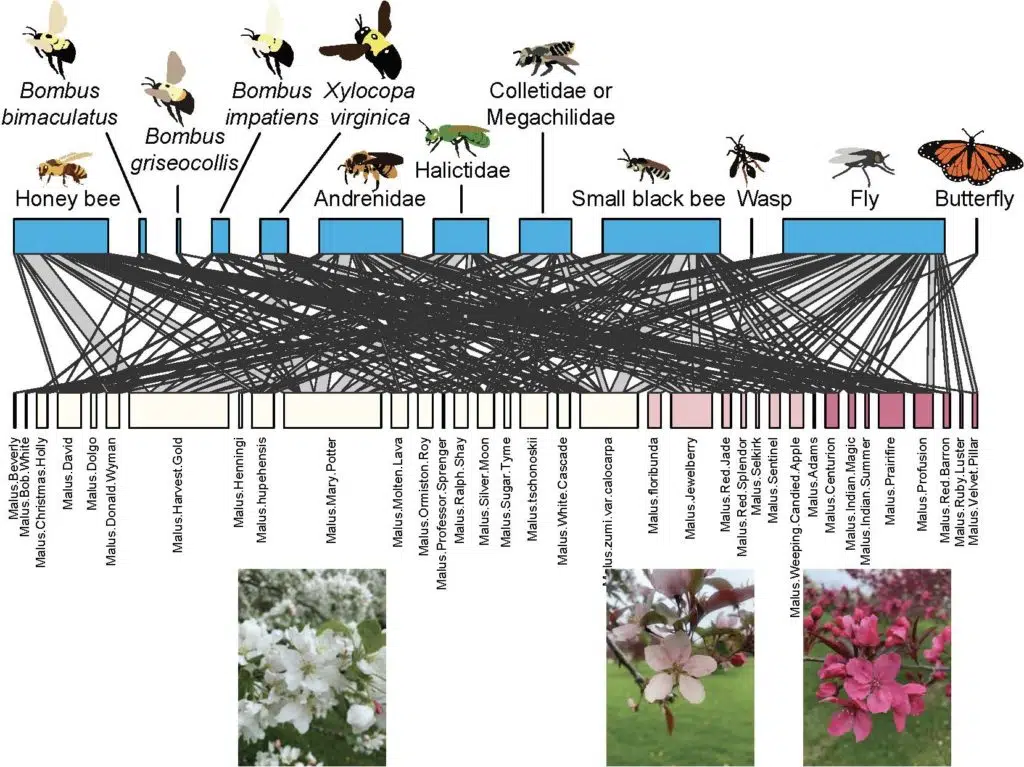
Why do we care about pollinators? Pollinators are important creatures in natural ecosystems and our daily life because they provide vital services to wild plants and our crops. Pollinators carry and deliver pollen to facilitate plant fertilization to produce fruits and seeds. These fruits serve as food for many animals in nature, and the seeds are next-generation offspring to maintain plant persistence. Nearly 300,000 wild plants (87% of flowering plants) depend on pollinators and their services. For humans, 75% of our leading crop species and 35% of global food production depend on pollinators, including our favorite ones (e.g. apples, strawberries, pears, tomatoes, coffee, etc.)
Pollinators are diverse. While honeybees, mainly the domesticated European species Apis mellifera, remain the most economically valuable pollinators in agriculture worldwide, other bee species, non-bee insects and vertebrates are also important pollinators for crops and wild plants. Our previous work on strawberries have identified diverse visiting pollinators, including bees, flies, butterflies, wasps, beetles, true bugs and other insects. At Holden, our work on crabapples (wild apples, Malus) has also detected a diverse array of pollinators, including many bee species, wasps, flies, and butterflies.

Pollinators are declining. Declines in the abundance and diversity of domesticated and wild pollinators have been reported globally. Such declines have been found to cause pollen limitation in natural ecosystems and threaten plant reproduction. A number of factors that are responsible for pollinator declines have been identified, including the loss of nesting habitats, decreased floral resources, the introduction of alien pollinators, and agrochemical use, especially insecticides. Our work has found that the agrochemical use of bactericide and fungicide has limited effects on pollinator visits to flowers. However, it remains unclear whether and how the agrochemical residuals on pollinators would affect their health and offspring survival.
Pollinators have different preferences for plants. Although pollinators often visit more than just one plant species, they do have different preferences for plants, depending on floral traits including flower shape, color, size, scent, and nectar and pollen reward. Our work on crabapples has shown that pollinators vary in their visits to different crabapple cultivars that differ in floral abundance and other traits. Due to different pollinator preferences, it is important to use this information to guide the design of pollinator-friendly gardens that can support pollinator diversity and abundance.
How do we study pollinators?
Field observations. Most of our work on plant–pollinator interactions is based on field observations. We identify and count the number of pollinators that visit a plant. This method provides a relatively unbiased estimate of pollinator diversity and abundance, but is challenging to identify pollinators. For citizen science projects, we encourage our guests to the Holden Arboretum to use iNaturalist app on your smart devices to take pollinator photos. This app will provide some pollinator identification information.
Pan traps and other methods. Due to the challenges in pollinator identification based on observations alone, we also capture insects using pan traps and other methods (e.g. sweep nets). We are starting to place pan traps (fluorescent white, blue, and yellow bowls filled with soapy water) at the Holden Arboretum to get a baseline of pollinator communities.














